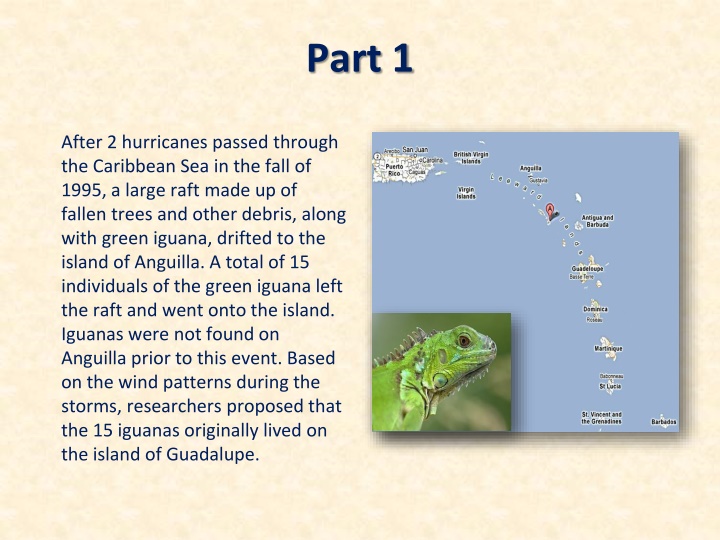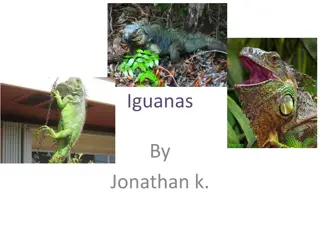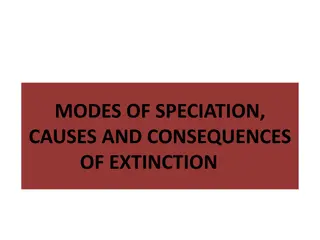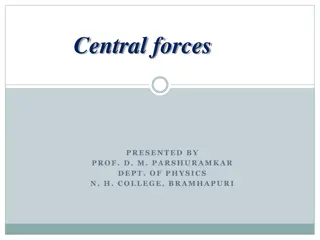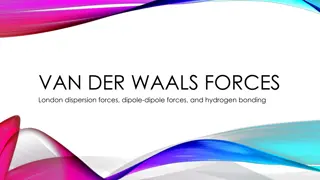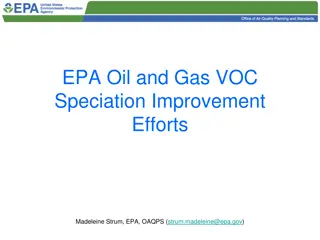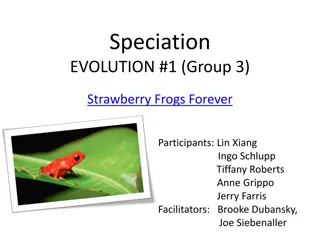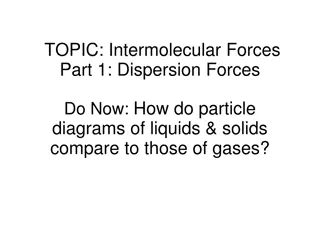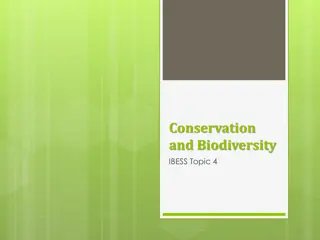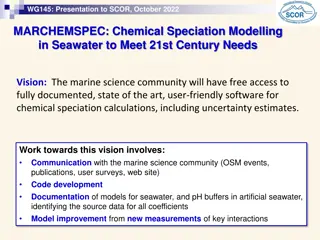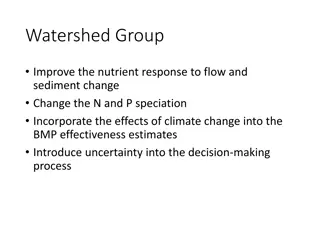Evolutionary Forces and Speciation in Iguanas: A Study from the Caribbean
After two hurricanes in 1995 carried green iguanas from Guadalupe to Anguilla, evolutionary forces are expected to act on the new iguana population. A study hypothesizes allele frequency differences between the populations, potentially leading to speciation by 2050. The morphospecies concept was used to identify true species among snapping shrimp populations divided by the Isthmus of Panama.
Download Presentation

Please find below an Image/Link to download the presentation.
The content on the website is provided AS IS for your information and personal use only. It may not be sold, licensed, or shared on other websites without obtaining consent from the author.If you encounter any issues during the download, it is possible that the publisher has removed the file from their server.
You are allowed to download the files provided on this website for personal or commercial use, subject to the condition that they are used lawfully. All files are the property of their respective owners.
The content on the website is provided AS IS for your information and personal use only. It may not be sold, licensed, or shared on other websites without obtaining consent from the author.
E N D
Presentation Transcript
Part 1 After 2 hurricanes passed through the Caribbean Sea in the fall of 1995, a large raft made up of fallen trees and other debris, along with green iguana, drifted to the island of Anguilla. A total of 15 individuals of the green iguana left the raft and went onto the island. Iguanas were not found on Anguilla prior to this event. Based on the wind patterns during the storms, researchers proposed that the 15 iguanas originally lived on the island of Guadalupe.
a- Do you expect evolutionary forces to act on the new iguana population of Anguilla? If yes, which evolutionary agent (s) do you expect to act on this population?
b- Outline a study designed to test your hypothesis that the evolutionary agent (s) you identified in the previous question produced allele frequency differences in the 2 populations of iguanas (the old population of Guadalupe and the new population of Anguilla).
c- Design an experiment that would test whether the 2 populations of iguanas in the year 2050 have diverged into 2 separate species (in other words if speciation has occurred). Your experiment should identify the species definition (s) used and should include all components of good scientific inquiry (hypothesis, prediction, controls, replication, variables, etc.).
About 3 million years ago, the Isthmus of Panama (a narrow strip of land connecting North and South America) rose above sea level, dividing marine organisms into Pacific and Caribbean populations. Researchers examined species of snapping shrimp on both sides of the isthmus. Based on the morphospecies concept, there appeared to be seven pairs of species, with one species of each pair in the Pacific and the other in the Caribbean. Different species live at somewhat different depths in the ocean. Using mitochondrial DNA sequences, the researchers estimated phylogenies and found that these species pairs, separated by the isthmus, were indeed each other's closest relatives. They investigated mating in the lab and found that many species pairs were not very interested in courting with each other, and any that did mate almost never produced fertile offspring. The sister populations on opposite sides of the isthmus are true species under which species concept? A. The morphospecies concept B. The biological species concept C. The phylogenetic species concept D. Both A and C E. Answers A, B, and C are all correct.
You want to study divergence of populations, and you need to maximize the rate of divergence in order to see results within the period of your grant funding. You will form a new population by taking some individuals from a source population and isolating them so the two populations cannot interbreed. What combination of characteristics would maximize your chance of seeing divergence in this study? 1. Choose a random sample of individuals to form the new population. 2. Choose individuals from one extreme to form the new population. 3. Choose a species to study that produces many offspring. 4. Choose a species to study that produces a few, large offspring. 5. Place the new population in the same type of environment as the source population. 6. Place the new population in a novel environment compared to that of the source population. A. 1, 3, and 5 B. 2, 4, and 6 C. 2, 3, and 5 D. 1, 3, and 6 E. 2, 3, and 6
A small number of birds arrive on an island from a neighboring larger island. This small population begins to adapt to the new food plants available on the island, and their beaks begin to change. About twice a year, one or two more birds from the neighboring island arrive. What effect do these new arrivals have? A. Their arrival tends to promote adaptation to the new food plants. B. Their arrival tends to retard adaptation to the new food plants. C. Their arrival represents a colonizing event. D. Their arrival speeds the process of speciation. E. None of the above
A storm brings two formerly separated populations of beetles together. They look very similar. Under the biological species concept, which of the following would show that the two populations are different species? A. When individuals from the two populations mate with each other in the laboratory, the eggs fail to hatch. B. Males of the two populations have different flight patterns in courtship. C. One population breeds in spring, the other in fall. D. All of the above are correct. E. None of the above is correct.
Several closely related frog species of the genus Rana can be found in the forests of the southeastern US. Male of one species sing only during rainy conditions; males of another species sing only when it is not raining. The 2 species boundaries are maintained by which type of reproductive barrier? A. Behavioural B. Gametic C. Spatial D. Temporal E. Mechanical
